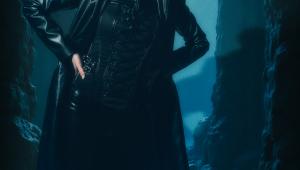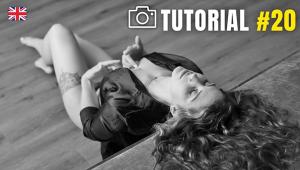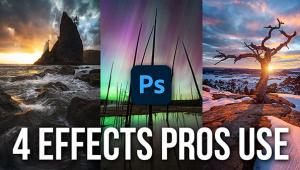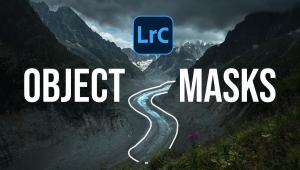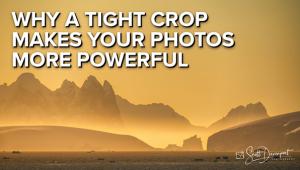Digital Help
Q&A For Digital Photography
This department will attempt to provide solutions to problems readers may have getting into and using digital cameras, scanning, and using digital photographic images with a computer and different kinds of software. All questions sent to me will be answered with the most appropriate information I can access and provide. However, not all questions and answers will appear in this department. Readers can send questions to me addressed to Shutterbug magazine, through the Shutterbug website, directly via e-mail to: editorial@shutterbug.com or fotografx@mindspring.com or by US Mail to: PO Box 2830, Lompoc, CA 93438.
Sawtooth Edges, Jaggies, Signs Of Low Image Resolution
Q. Image size I don't know but it is in JPEG if that helps, and it's
from a slide. I scanned at 300, 600, 900 and 1200dpi. Sorry, I do not know final
image size either I am a "monkey-trained" idiot But my Epson 1280
prints at 300dpi I do believe whatever the factory setting is.
The above question was what I found essential to understand this readers problem
after several back and forth e-mails. Not wanting to embarrass the reader, or
anyone else that feels as he does, I'll not provide a name to identify
the questioner. But I would suggest that readers who find themselves in similar
circumstances should provide a question that describes as fully as possible
what their problem might be.
--DB
A. A sawtooth edge in an image, or "jaggie," which
is usually only apparent when the subject edge is diagonal to the sides of the
format, is the result of pixilation that is caused by too low an image resolution.
An ideal image resolution is 300dpi if the image is sized to the intended print
output, whether it is 4x6" or 8x10". Printer resolution is unrelated
to image resolution, and is usually much higher, like 1440-2880dpi for quality
photo-realistic prints with an Epson printer like the Stylus Photo 1280. Epson
and other printer manufacturers in newer models are now avoiding using the printer
resolution figures in the printer's software driver, substituting a "quality"
designation like "photo" or "best photo" to eliminate
the resolution confusion.
It appears the sawtooth effect originated from scanning a slide at too low a
resolution originally and is simple pixilation. With an Epson Perfection 3200,
and most consumer scanners used to scan 35mm film, always set the resolution
to the optical maximum (3200dpi for the Epson Perfection 3200) at 1:1 or 100
percent of the size of the original film image. Then, when the scan is done
and opened in Photoshop, change the resolution to 300dpi with Resample turned
off. You should then have an image file that will make an 8x10, or somewhat
larger print without any sawtooth pixilation.
Film Scanner Profiles And Scanning Color Negative Film
Q. I've got a quick question that I hope you can answer before I do the
Bryce Canyon negatives that are sitting in front of me, beckoning. I had seen
those profiles (in my Color folder, ed.) before and read in the manual, and
they didn't appear to apply to color negatives because the manual (Minolta
DiMAGE Scan Elite 5400) states "MLTF5400.icc-used with positive film."
I didn't think that profile or the other one applied because I'm
using negative film and both of the installed profiles relate to positive film,
which I assume is slide film.
James Metchnek
A. Your assumption is essentially correct. When scanning negatives the scanner profile is not referenced in respect of the film being scanned. Color control that would be applicable to positive transparencies is replaced with whatever "film terms" are applied when color negative media selection is made. With some scanner drivers the film term is specific, and you select the manufacturer, brand, and speed for the film you are scanning; with other scanner drivers the film term adjustment is automatic and dynamically based on an analysis of the raw data collected in a pre-scan.
When Is A Digital Photograph Too Sharp?
Q. The Unsharp Mask preview thumbnail had the image of a pink rosebud at 100
percent. I printed a close-up of the image, and smaller prints were beautiful;
the 11x7.33 was beautiful but with what looked like harsh grain (this with an
18MB image CD from Kodak 135 Gold 200 sharpened a lot). It gave more effect
than a sunset from a 4.5MB image from Gold 200 film but it also looked smoother
(sharpened a little) on the Unsharp Mask preview. Should not the 18MB image
blow away the 4.5MB image? Or can oversharpening wreck a fairly high-resolution
image?
Dick Kletsch
A. Yes, overdoing Unsharp Mask sharpening will make grain excessively apparent and make the image look harsh--that's wrecking it, in my opinion. Unfortunately, the monitor screen representation of a digital photograph can be misleading in terms of how sharp the image will reproduce in a print. If you add sharpening using Filters in Photoshop, it is a good idea to make a test print before you save the change to the image file. It is always easy to add a little more sharpening if a print is not sharp enough, but it is very difficult to remove excess sharpening once it is saved to an image file.
OK May Not Be Good Enough--Color Management Can Make It Better
Than OK
Q. I know that you have covered the subject many times, but I still can't
seem to get it. I've been making 13x19 prints which are "OK,"
but not as good as I'd like for exhibition. Please give me your recommendation
for a first-rate color management system. I have Photoshop CS and a Mac G4 running
on 10.2.8, an Epson 2200, and an ancient Nikon Coolscan II.
Donald Gerson
A. Maybe you are like me and have to really get into something
and do it yourself before the puzzle becomes clear and complete. Just from a
description in words, color management is, and seems to most, a complex concept
that is quite opaque.
There are two parts of color management everyone needs to deal with. One is
calibration and profiling, and that foundation for color management is your
monitor. To accurately calibrate and profile your monitor requires a good sensor.
The least expensive good quality sensor and easy to use software is supplied
in ColorVision's Spyder and PhotoCAL software. I would suggest going to
their website at: www.colorvision.com. There is also considerable support documentation
available on the ColorVision website. And, another perspective that may make
understanding color management easier can be found at: www.on-sight.com.
The other, and practical part of color management is what is referred to as
workflow. This essentially involves selecting and using the correct color management
profiles for each step in the digital image production process, from input,
in your working application (Photoshop), and for output.
Question On Digital Camera Exposure--Does Film Experience Apply?
Q. I have been photographing for over 20 years and my latest film camera is
a Nikon F5, which I have been very happy with. However, a year ago I acknowledged
the inevitable march of technology and purchased a Nikon D100 digital body to
use with my lenses. My results with the D100 have been mixed and at times have
been very frustrating. There appears to be a steep learning curve with digital
cameras plus all of the correcting and editing of the images that now falls
on the user.
My most frustrating problem has been with the exposure quality. I had been treating
the D100 just as I would treat my F5 and as a general rule I tend to dial in
2/3 stops of overexposure whenever I shoot with color print film. I like a slightly
thick and saturated negative. Until recently, I have also been doing this with
my D100 and my images have tended to be washed out and on the "thin"
side. Recently, it dawned upon me that I may have been looking at the situation
from the wrong end. A digital camera does not function as a color negative camera--it
functions as a color slide camera.
With this in mind I have been dialing in 2/3 stops of underexposure and so far
I have been happier. At least there appears to be some substance to my images.
Also, of late I have changed the method of exposure from Matrix Metering to
Center-Weighted Averaging. This tends to tighten the field of metering that
the camera uses and I have also been happy with this adjustment.
Can your staff confirm my thinking on this? Am I on the right track in treating
my D100 as a slide film camera or are the improvements I have seen just some
sort of "beginner's luck"? Also, can you make any other suggestions
as to things I can do to improve the quality of my images before I have to do
a lot of editing in Photoshop? Thanks for the help and keep up the great work.
David Allen
A. You are essentially on-target assuming a digital camera
behaves more like a film camera loaded with slide transparency film than one
loaded with color negative film. However, you can't go further and assume
an exposure compensation will have a similar affect on the result. Most higher-end
digital cameras have a built-in histogram display which, if used properly, provides
a check on exposure accuracy. If exposure is correct it should, inside the histogram
graph, ideally indicate the exposure information is all inside the graph space
without clipping on either the shadow or highlight side. With a digital camera
the best exposure is to place all of the recorded information within the histogram
gamut space. If the brightness range is greater than the sensitivity range of
the camera's chip then, with most subjects, any clipping that is done
should usually be on the shadow side. Otherwise, overexposure will result in
a washed-out image with a loss of image information in the highlights.
Post-exposure, both image lightness/darkness and saturation are easily adjusted
in software by moving the gray midpoint (the center triangle slider node) in
the Levels dialog window in Photoshop to lighten or darken the image, and using
Hue/Saturation to increase or decrease saturation. So trying to accomplish these
adjustments using camera exposure compensation when capturing the image is not
a productive or advantageous policy.
But if you want easy, just set the camera's output to its highest quality
JPEG setting and the camera's internal processing should give you basic
point-and-shoot results that should not require any Photoshop adjustment.
- Log in or register to post comments







